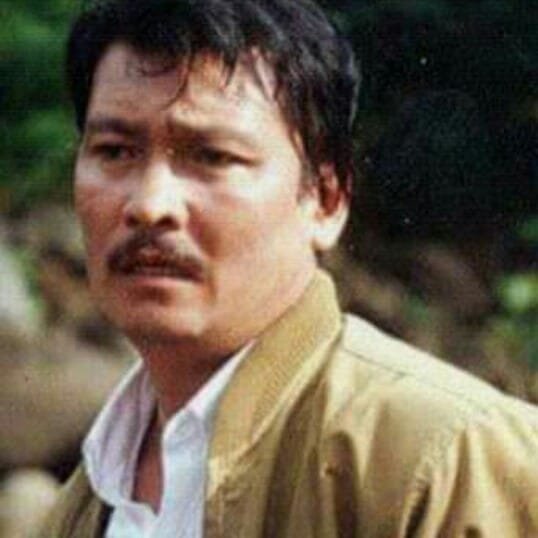After “SekSinema (Gender Images in Philippine Sex Cinema Enfolding Pandemia)” I am doing “Bakbakan (Action Movies in the Philippines)” to be published by BVV8 Media Productions.
I have already written the outline of the project and culled photos —stills, studio pictorials, candid, set snapshots, etc.— exclusive or shared, about the topic from my files stored in my vault.
Before the advent of cellphone cameras, instamatic cameras like Asahi or Olympia with Fuji film or negatives in it or Kodak with the same filaments were in vogue among entertainment press covering various events— press conferences, visits on location shoots of movies, especially, and yes, tapings of TV shows, when exclusive and monopolized tube productions were not yet lording them over minor or secondary even equally big networks.
ART IN THE HIGHEST FORM
Action movies are typically the gun toting, kicking and boxing, fistfights, gunfights, explosions, car chase, espionage, undercover agenting, thriller, karate, judo, the “kiss-kiss, bang-bang” type, etc.
But action movies are also basically the manner by which a character in the narrative is motivated by stimuli, situations, conflicts and other circumstances within and without the persona as in tension, internal and external, the problems solved in the denouement and finally the purgation of minds and emotions in reel world.
Action movies are also art in the highest form but sadly, in the context of many local films, the logic and credibility of this genre are lost thereby making them mediocre commercial ventures.
There were attempts, though, to level up action movies to excellent mimesis of action-filled real life of the quotidian like Arnel Barbarona’s “Tu Puy Imatuy” (2017), Arnel Mardoquio’s “Crossfire” (2011), Gerry dr Leon’s “The Moises Padilla Story” (1961), etc.; Celso Ad Castillo’s “Asedillo” (1971) etc., Lino Brocka’s “Santiago” (1970), “Bayan Ko, Kapit sa Patalim” (1984), etc.;
(Mario O’Hara’s “Bagong Hari” (1986), Ishmael Bernal’s “El Vibora” (1972), “Wating” (1994) etc., Brillante Ma. Mendoza’s “Alpha: The Right to Kill” (2018), “Motherland” (2024), etc. Lav Diaz’ “Hesus Rebolusyonaryo” (2002), “Serafin Geronimo: Kriminal sa Baryo Concepcion” (1998), “Panahon ng Halimaw” (2018) etc., Erik Matti’s “OTJ (On the Job) 1 and 2 (Missing 8)” (2013 and 2021, respectively), Romy Suzara’s “Pepeng Shotgun” (1981), Joel Lamangan’s “Dukot” (2009), “Death Row” (2000), etc., and Richard Somes’ “Ishmael” (2010), “Supremo” (2012), among many others from no-nonsense directors.
They’re arguably action-drama but intense acts just the same.
Critics might say they’re pure action movies but they are also mutations of drama-action for there is no straight action from beginning to end of a film.
CHAMPS OF THE OPPRESSED
It just so happens that the lead stars of the projects are established action heroes or built in the image of an action star albeit with clayed feet— champion of the oppressed, deliverer of justice and freedom though a barrel of a gun or turn a villain into a punching bag, savior of the underdogs etc.— that made them hyperbolic.
The late Fernando Poe, Jr. was dubbed King of Philippine Movies while he also acted melodramatic, sang and sometimes unconsciously played “cutesy patootsie” like a matinee idol in some big screen scenes.
Lito Lapid is a sexy and dramatic star with daring stunts on the side especially in his earlier films like “Yakapin Mo Ako, Lalaking Matapang” (1980), “Kastilyong Buhangin” (1980), “Gaano Kita Kamahal” (1981), etc. or bed scenes with leading ladies the way Ramon Revilla, Sr., Rudy Fernandez, Ace Vergel, etc. did in the recent past and Ramon “Bong” Revilla, Jr., Phillip Salvador, Robin Padilla, among others, not excluding their copycats, are still doing in the present.

Even Chinese kung fu movies aren’t entirely action but there are ingredients of multiple genres like drama, sex, fantasy, etc. Bruce Lee’s martial arts cinema had derivations from classics while Jackie Chan’s outings are peppered with comic antics and highly-charged emotional scenes to a certain extent mawkish.
Thailand’s “Ong Bak” series which stars Tony Jaa who is widely known as Tatchakorn Yeerum, aside from hardcore Muay Thai, silat, among other indigenous self-defense moves, have poignant Asian drama as well.
In the home front, the more palatable mishmash of an action menu, the merrier, the more attractive however cynics and naysayers calling out action films dead.
“Bakbakan (Action Movies in the Philippines)” is more than a biography and public landscapes of action superstars and their semiotics.
